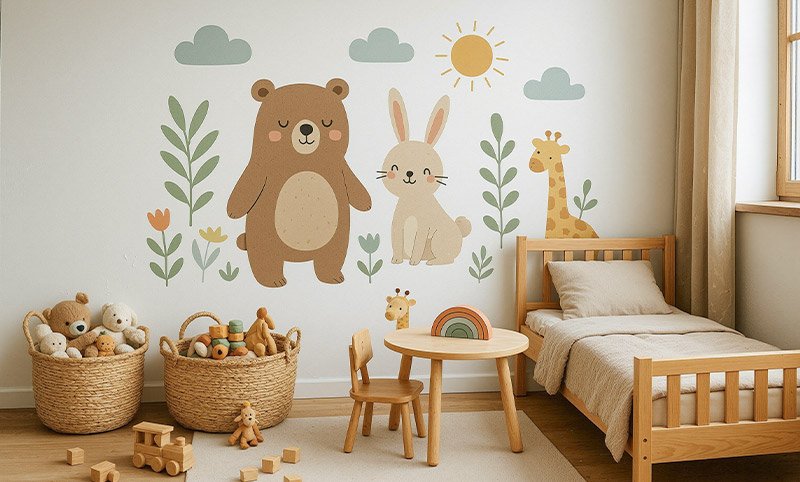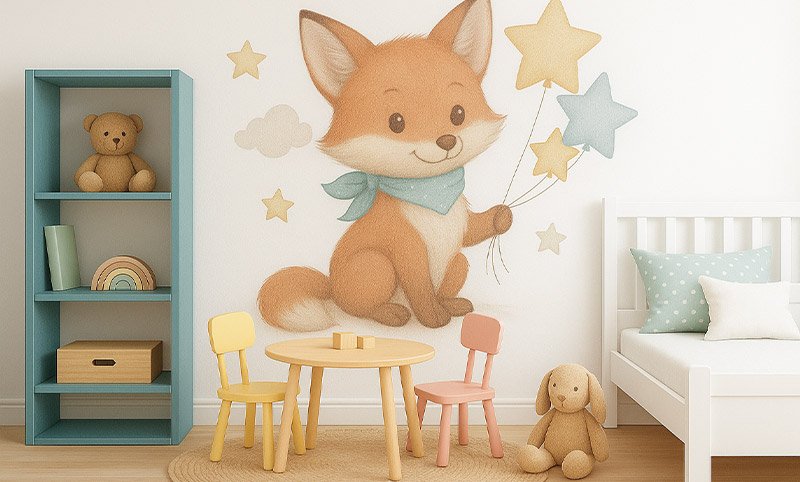A child’s bedroom is more than just a place to sleep—it’s a space where dreams are nurtured and creativity blooms. A mural designed specifically for your child’s bedroom can transform an ordinary room into an imaginative wonderland that grows with them. In this post, we guide you through the process of designing a dream mural that is as safe and playful as it is visually captivating.

Understanding Your Child’s Interests
Every child is unique, and their bedroom mural should reflect their personality and interests.
- Involve Your Child: Start by discussing themes together. Is your child fascinated by outer space, enchanted forests, or perhaps marine adventures?
- Theme Exploration: Once a theme is chosen, search for inspiration online or in children’s books. This ensures that the final design resonates with your child’s imagination while still being age-appropriate.
Selecting the Right Materials
Safety and durability are paramount when designing a mural for a child’s room.
- Non-Toxic Paints: Ensure that all paints and finishes are non-toxic and safe for children. Look for certifications that confirm safety standards.
- Durability: Children can be energetic, so opt for materials that withstand wear and tear. High-quality acrylics or specially formulated wall coverings are excellent choices.
- Washability: Consider finishes that are easy to clean. A mural that can be wiped down without damage is ideal for a child’s room.
Designing a Space That Grows with Your Child
A timeless design can adapt as your child evolves, ensuring the mural remains relevant over time.
- Subtle and Layered Designs: Integrate elements that are whimsical now but can be appreciated later. For instance, a night sky mural can be enchanting for young children and later serve as a conversation piece in their teenage years.
- Personalization: Think about incorporating your child’s name or birthday subtly into the design. This personal touch makes the room uniquely theirs.
Collaboration: Working with a Professional
When in doubt, professional mural artists bring expertise that can elevate your vision.
- Consultation: Start with a consultation to discuss ideas and refine the design based on your child’s interests and the room’s dimensions.
- Collaboration: A good artist will involve you (and even your child) in the creative process, ensuring every detail adds to the room’s magic.
- Flexibility: Professionals can offer suggestions that fit both the design and the technical constraints of the space, ensuring the mural not only looks good but is also practical.

Incorporating Educational Elements
A mural need not be purely decorative; it can also be educational.
- Learning Through Art: Consider integrating elements such as an alphabet, numbers, or maps. These subtle additions support early learning while still maintaining a fun theme.
- Encouraging Curiosity: Designs that invite interaction—for example, a “find the hidden treasure” motif—can spark your child’s curiosity and exploration skills.
Steps for Execution
- Planning: Sketch out a rough layout, taking into account the focal points of the room (like the bed or reading nook).
- Preparation: Prepare the wall by cleaning and priming to ensure a smooth surface for painting.
- Application: If you’re confident, try a DIY approach for simpler designs; however, professional execution may be best for large-scale or intricate murals.
- Finishing Touches: Seal the mural with a protective coating to safeguard it against scuffs and stains.
Designing a dream bedroom mural for your child is a rewarding project that goes far beyond aesthetics—it creates a space where your child can feel inspired and safe to dream big. With careful planning, attention to safety, and a collaborative approach, you can transform an ordinary room into a vibrant canvas of creativity and learning. Embrace the magic of art and give your child a lifelong reminder that their dreams are boundless.

